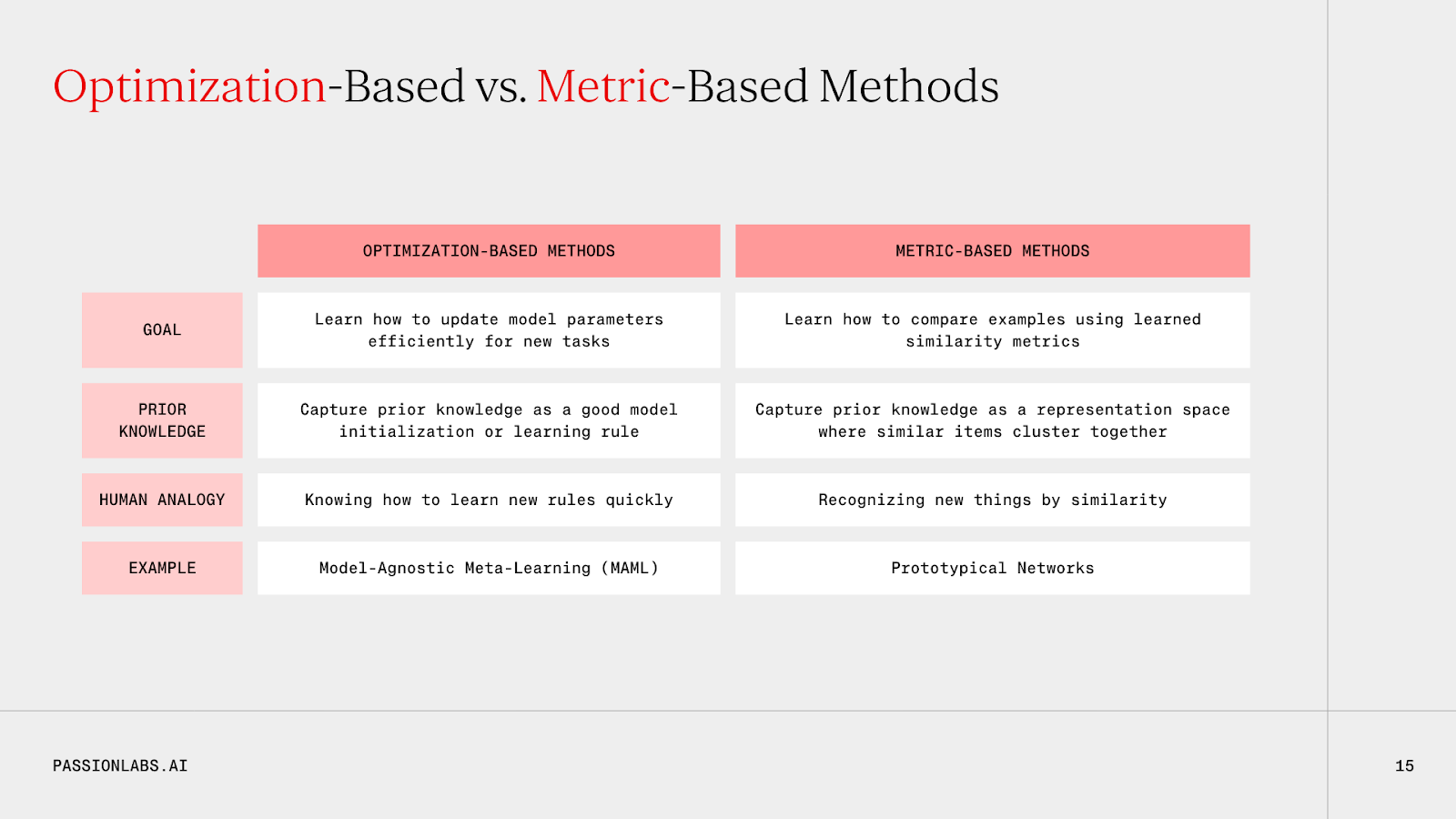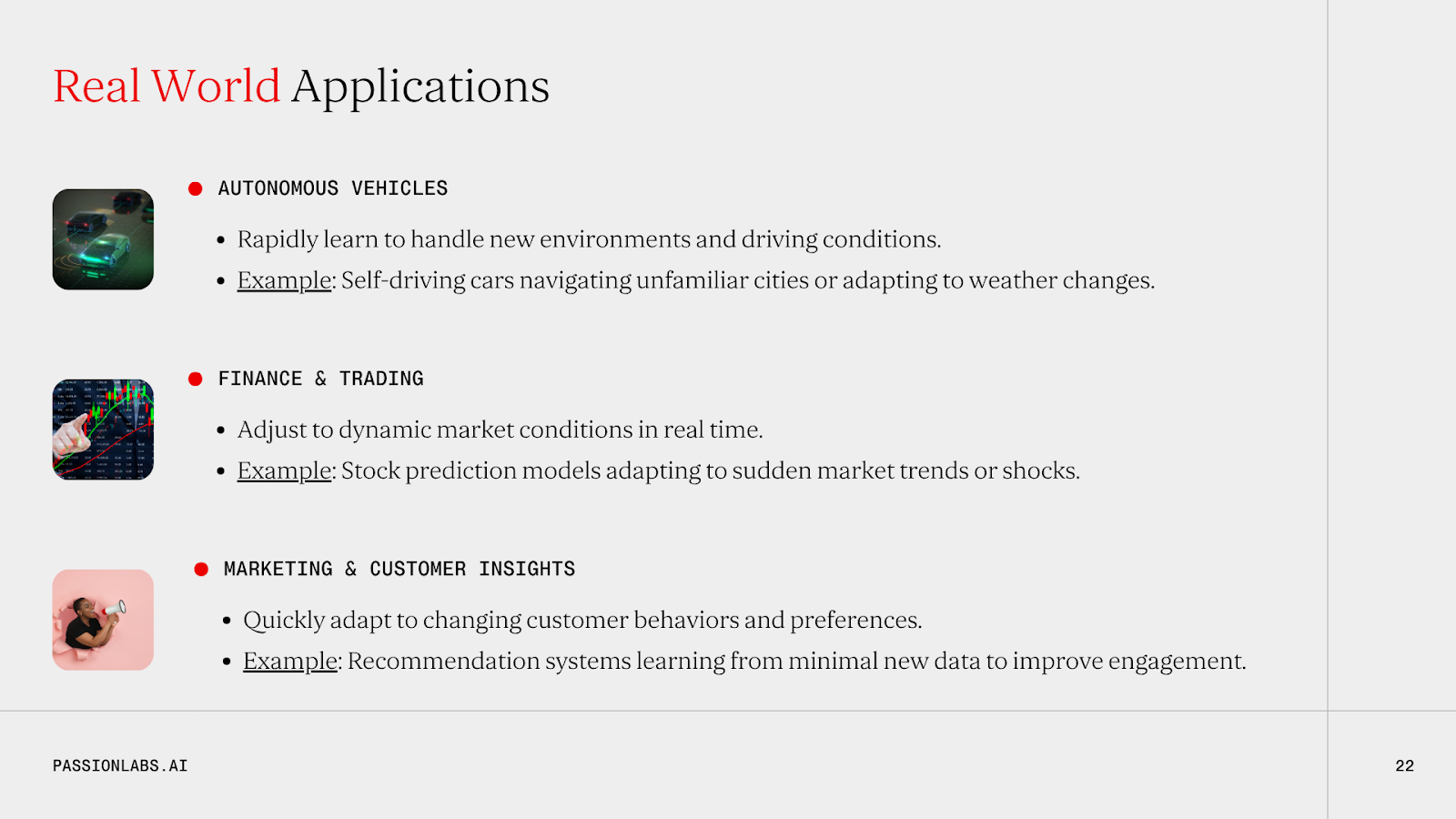How AI Models Learn to Learn: Meta- Learning Explained
.png)

.png)

By George Marmaras, Junior Machine Learning Engineer at Passion Labs
At Passion Labs, we like to explore what makes intelligent systems truly intelligent. In our latest Passion Academy, Machine Learning Engineer George Marmaras unpacked one of the most exciting frontiers in AI research- meta-learning, or “learning to learn”.
A classic machine learning setup looks something like this: you give a model a big labeled dataset (say, 5000 images of animals) and train it over many passes, called epochs. Each time, it adjusts its parameters to make slightly fewer mistakes until it can confidently tell a tiger from a parrot.\
This approach works beautifully… until it doesn’t. What happens when we have very little data? The model either memorizes what it sees (overfitting) or fails to pick up reliable patterns (underfitting).
And if we want to teach the same model to recognise a new set of animals, we usually have to start over from scratch. That’s time, data, and compute wasted. Humans, on the other hand, don’t work like that.
"Humans don’t start from zero every time. We reuse prior experience”- George Marmaras
Once you’ve learned what a cat is (maybe with a few examples), you can probably recognise other cats quite easily. Even if colours, backgrounds and breeds are slightly different.
This ability to reuse knowledge and adapt quickly is what meta-learning aims to replicate in machines.
At its core, meta-learning is about training models not just to perform tasks but to learn new tasks quickly.
Instead of mastering one big dataset, the model is exposed to many small tasks. Each one teaches it something about how learning itself works.
Over time, it learns a general sense of pattern, a “learning strategy” it can reuse. So when it sees a brand-new problem, it can adapt from just a handful of examples.
In other words, a meta-learner doesn’t just learn what to do, it learns how to learn.\

In George’s demo, a model was trained on 100 animal species but only 10 images per class. Instead of one big training process, it faced thousands of small “mini-tasks,” each a tiny classification problem.
Through this setup, the model learned how to generalise. When shown a completely new animal later, it could adapt instantly, needing just a few examples to classify correctly.


Traditional models are specialists powerful but rigid. Meta-learning models are generalists- flexible, adaptive, and data-efficient.
"Traditional training learns a task. Meta-learning learns how to learn tasks.”
At Passion Labs, that’s exactly the kind of intelligence we’re passionate about building, AI that learns with heart, like humans do.